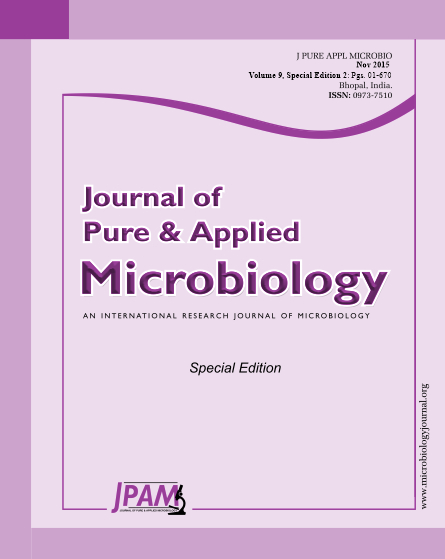A field experiment was carried out during the winter (rabi) seasons of 2010-2011 and 2011-2012 at Banaras Hindu University, Varanasi, to study the effect of nutrient management practices on the productivity and profitability of Indian mustard [Brassica juncea (L.) Czernj. & Cosson] under irrigated condition. The experiment was laid out in randomized block design comprised eight treatment combinations in three replications. The study revealed that conjunctive use of Azotobacter + PSB seed treatment + 100% (N + P2O5) recorded maximum growth parameters viz. plant height, number of functional leaves, dry matter accumulation and number of branches, yield attributes viz. number of siliquae, length of siliqua, seeds/siliqua and 1000-seed weight and seed as well as stover yields remained at par with 50% (N + P2O5), Azotobacter + PSB seed treatment 75% (RDNP). The maximum gross return (‘ 29,680 and 43,282) and net return (‘ 15,717 and 25,600) were obtained with Azotobacter + PSB + 100% RDNP, however maximum output: input ratio (1.16 and 1.50) was recorded under Azotobacter + PSB + 75% RDNP.
Biofertilizers, Fertility levels, Mustard and Yield
© The Author(s) 2015. Open Access. This article is distributed under the terms of the Creative Commons Attribution 4.0 International License which permits unrestricted use, sharing, distribution, and reproduction in any medium, provided you give appropriate credit to the original author(s) and the source, provide a link to the Creative Commons license, and indicate if changes were made.


